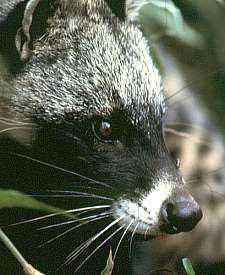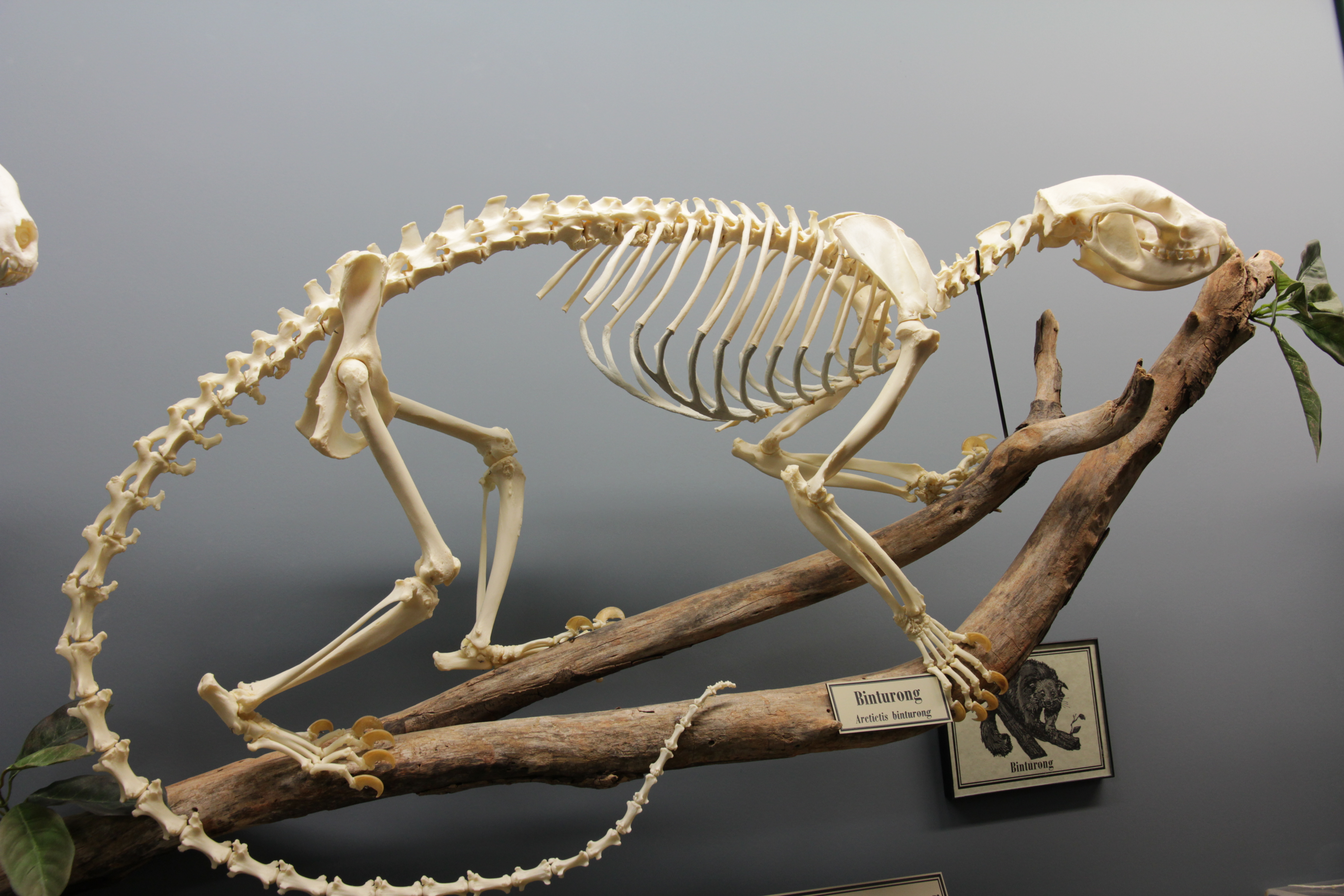|
Civettictis Braini
''Civettictis braini'' is an extinct species of civet that lived in South Africa during the Plio-Pleistocene. ''Civettictis braini'' differs significantly from the extant African civet in its dental proportions. Its canine and three premolars are relatively robust, and its carnassials and two molars are extremely reduced. Fossils have been found at the Kromdraai Kromdraai Conservancy is a protected conservation park located to the south-west of Gauteng province in north-east South Africa. It is in the Muldersdrift area not far from Krugersdorp. Etymology Its name is derived from Afrikaans meaning "Cro ... site and have been dated to around 2 million years ago. References Viverrids Pliocene mammals of Africa Pleistocene mammals of Africa Prehistoric carnivorans {{Paleo-carnivora-stub ... [...More Info...] [...Related Items...] OR: [Wikipedia] [Google] [Baidu] |
Pliocene
The Pliocene ( ; also Pleiocene) is the epoch in the geologic time scale that extends from 5.333 million to 2.58See the 2014 version of the ICS geologic time scale million years ago. It is the second and most recent epoch of the Neogene Period in the . The Pliocene follows the Epoch and is followed by the Epoch. Prior to the 2009 ... [...More Info...] [...Related Items...] OR: [Wikipedia] [Google] [Baidu] |
Pleistocene
The Pleistocene ( , often referred to as the ''Ice age'') is the geological Epoch (geology), epoch that lasted from about 2,580,000 to 11,700 years ago, spanning the Earth's most recent period of repeated glaciations. Before a change was finally confirmed in 2009 by the International Union of Geological Sciences, the cutoff of the Pleistocene and the preceding Pliocene was regarded as being 1.806 million years Before Present (BP). Publications from earlier years may use either definition of the period. The end of the Pleistocene corresponds with the end of the last glacial period and also with the end of the Paleolithic age used in archaeology. The name is a combination of Ancient Greek grc, label=none, πλεῖστος, pleīstos, most and grc, label=none, καινός, kainós (latinized as ), 'new'. At the end of the preceding Pliocene, the previously isolated North and South American continents were joined by the Isthmus of Panama, causing Great American Interchang ... [...More Info...] [...Related Items...] OR: [Wikipedia] [Google] [Baidu] |
Civet
A civet () is a small, lean, mostly nocturnal mammal native to tropical Asia and Africa, especially the tropical forests. The term civet applies to over a dozen different species, mostly from the family Viverridae. Most of the species diversity is found in southeast Asia. The best-known species is the African civet, ''Civettictis civetta'', which historically has been the main species from which a musky scent used in perfumery, also referred to as "civet", was obtained. Naming The common name is used for a variety of carnivoran mammal species, mostly of the family Viverridae. The African palm civet (''Nandinia binotata'') is genetically distinct and belongs in its own monotypic family, Nandiniidae. Civets are also called "toddycats" in English, "Mara Patti" in Malayalam, "musang" in Malay and Indonesian, and ''urulǣvā'' () in Sinhalese. There can be confusion among speakers of Malay because the indigenous word "musang" has been mistakenly applied to foxes by printed media in ... [...More Info...] [...Related Items...] OR: [Wikipedia] [Google] [Baidu] |
South Africa
South Africa, officially the Republic of South Africa (RSA), is the southernmost country in Africa. It is bounded to the south by of coastline that stretch along the South Atlantic and Indian Oceans; to the north by the neighbouring countries of Namibia, Botswana, and Zimbabwe; and to the east and northeast by Mozambique and Eswatini. It also completely enclaves the country Lesotho. It is the southernmost country on the mainland of the Old World, and the second-most populous country located entirely south of the equator, after Tanzania. South Africa is a biodiversity hotspot, with unique biomes, plant and animal life. With over 60 million people, the country is the world's 24th-most populous nation and covers an area of . South Africa has three capital cities, with the executive, judicial and legislative branches of government based in Pretoria, Bloemfontein, and Cape Town respectively. The largest city is Johannesburg. About 80% of the population are Black South Afri ... [...More Info...] [...Related Items...] OR: [Wikipedia] [Google] [Baidu] |
Plio-Pleistocene
The Plio-Pleistocene is an informally described geological pseudo-period, which begins about 5 million years ago (Mya) and, drawing forward, combines the time ranges of the formally defined Pliocene and Pleistocene epochs—marking from about 5 Mya to about 12 kya. Nominally, the Holocene epoch—the last 12 thousand years—would be excluded, but most Earth scientists would probably treat the current times as incorporated into the term "Plio-Pleistocene"; see below. In the contexts of archaeology, paleontology, and paleoanthropology, the Plio-Pleistocene is a very useful period to which scientists may assign the long and continuous run in East Africa of datable sedimentary layers and their contents (e.g. the Bouri Formation). These contents collectively present a focused view of the continuous evolution of the region's large vertebrates, especially the evolution of some African apes (hominids) to the earliest hominins; and then the development of the early humans and thei ... [...More Info...] [...Related Items...] OR: [Wikipedia] [Google] [Baidu] |
African Civet
The African civet (''Civettictis civetta'') is a large viverrid native to sub-Saharan Africa, where it is considered common and widely distributed in woodlands and secondary forests. It is listed as Least Concern on the IUCN Red List since 2008. In some countries, it is threatened by hunting, and wild-caught individuals are kept for producing civetone for the perfume industry. The African civet is primarily nocturnal and spends the day sleeping in dense vegetation, but wakes up at sunset. It is a wikt:solitary, solitary mammal with a unique coloration: the black and white blotches covering its coarse pelage and rings on the tail are an effective Crypsis, cryptic pattern. The black bands surrounding its eyes closely resemble those of the raccoon. Other distinguishing features are its disproportionately large hindquarters and its erectile dorsal crest. It is an omnivorous generalist, preying on small vertebrates, invertebrates, eggs, carrion, and vegetable matter. It is one of th ... [...More Info...] [...Related Items...] OR: [Wikipedia] [Google] [Baidu] |
Kromdraai
Kromdraai Conservancy is a protected conservation park located to the south-west of Gauteng province in north-east South Africa. It is in the Muldersdrift area not far from Krugersdorp. Etymology Its name is derived from Afrikaans meaning "Crooked Turn" after a kink in the meandering Crocodile River. History It was established to protect the caves, old gold mines, fossil sites, trout farm and a game reserve in the area. The caves in the area, known as the Sterkfontein caves have an extensive number of fossils and dolomite caverns. A well known fossil site is also named Kromdraai and it, along with such sites as Sterkfontein, Coopers, Swartkrans and Plovers Lake form part of the conservancy. Part of the Kromdraai conservancy also falls within the Cradle of Humankind World Heritage Site, proclaimed by UNESCO in 1998. Places of interest * Wonder Cave * Sterkfontein See also * Kromdraai, Limpopo * Rhino and Lion Nature Reserve, Kromdraai The white lion is a rare co ... [...More Info...] [...Related Items...] OR: [Wikipedia] [Google] [Baidu] |
Viverrids
Viverridae is a family (biology), family of small to medium-sized, feliform mammals. The viverrids () comprise 33 species placed in 14 genera. This family was named and first described by John Edward Gray in 1821. Viverrids occur all over Africa, southern Europe, and South Asia, South and Southeast Asia, across the Wallace Line. Their occurrence in Sulawesi and in some of the adjoining islands shows them to be ancient inhabitants of the Old World tropics. Characteristics Viverrids have four or five toes on each foot and half-retractile claws. They have six incisors in each jaw and Molar (tooth), molars with two tubercular grinders behind in the upper jaw, and one in the lower jaw. The tongue is rough with sharp prickles. A pouch or Anal gland, gland occurs beneath the anus, but there is no cecum. Viverrids are the most primitive of all the families of Feliformia, feliform Carnivora and clearly less specialized than the Felidae. In external characteristics, they are distinguishe ... [...More Info...] [...Related Items...] OR: [Wikipedia] [Google] [Baidu] |
Pliocene Mammals Of Africa
The Pliocene ( ; also Pleiocene) is the epoch in the geologic time scale that extends from 5.333 million to 2.58See the 2014 version of the ICS geologic time scale million years ago. It is the second and most recent epoch of the Neogene Period in the . The Pliocene follows the Epoch and is followed by the Epoch. Prior to the 2009 ... [...More Info...] [...Related Items...] OR: [Wikipedia] [Google] [Baidu] |
Pleistocene Mammals Of Africa
The Pleistocene ( , often referred to as the ''Ice age'') is the geological epoch that lasted from about 2,580,000 to 11,700 years ago, spanning the Earth's most recent period of repeated glaciations. Before a change was finally confirmed in 2009 by the International Union of Geological Sciences, the cutoff of the Pleistocene and the preceding Pliocene was regarded as being 1.806 million years Before Present (BP). Publications from earlier years may use either definition of the period. The end of the Pleistocene corresponds with the end of the last glacial period and also with the end of the Paleolithic age used in archaeology. The name is a combination of Ancient Greek grc, label=none, πλεῖστος, pleīstos, most and grc, label=none, καινός, kainós (latinized as ), 'new'. At the end of the preceding Pliocene, the previously isolated North and South American continents were joined by the Isthmus of Panama, causing a faunal interchange between the two ... [...More Info...] [...Related Items...] OR: [Wikipedia] [Google] [Baidu] |





